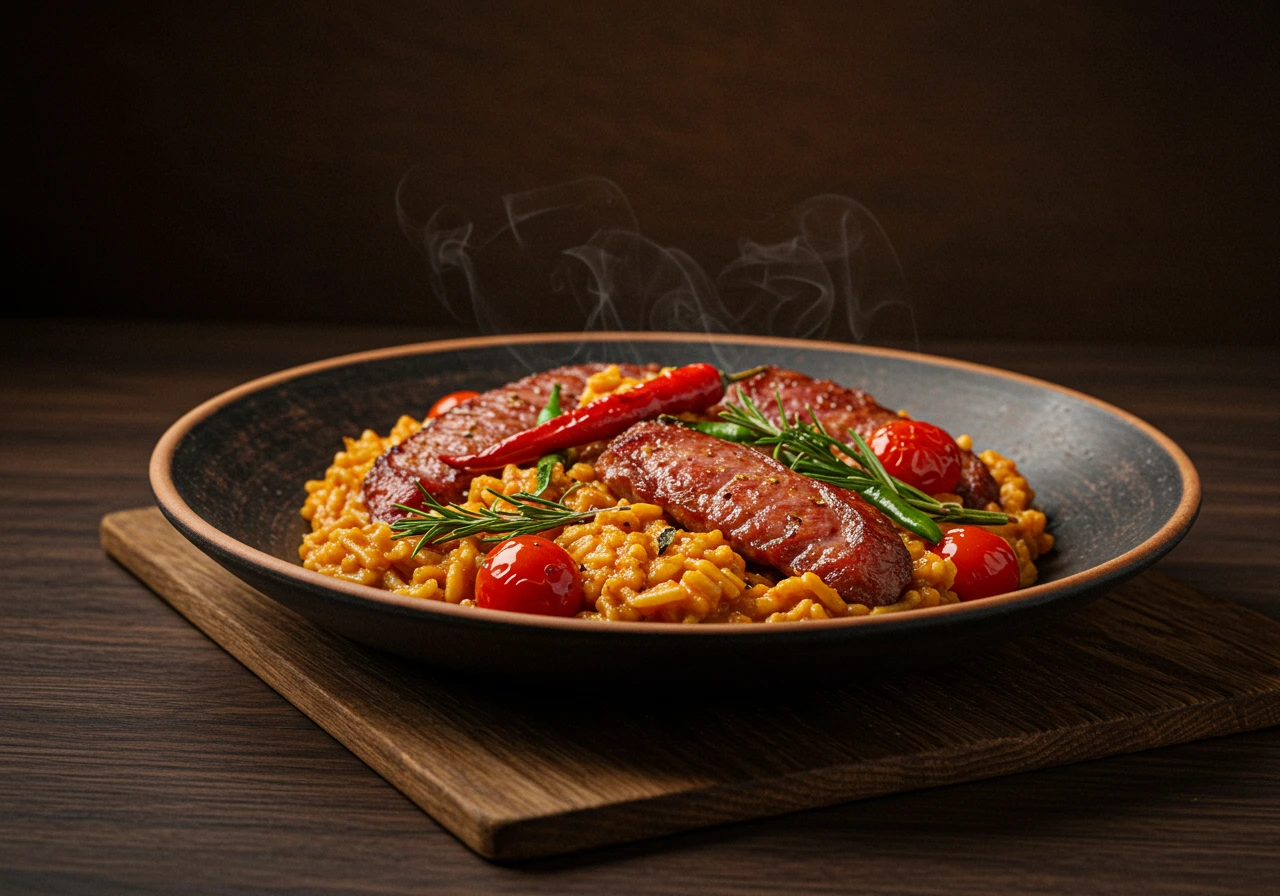Introduction
If there’s one thing that captures the soul of Cajun cooking in a single skillet, it’s the Pastalaya Recipe. Bursting with flavor, this southern twist on a pasta dish brings together the comforting texture of noodles with the bold, spicy flair of traditional jambalaya. But here’s the fun part—Pastalaya isn’t just delicious, it’s an adventure in your kitchen.
From the moment you dice up that trinity of onions, bell peppers, and celery, to the second you stir that bubbling pot of smoky sausage and golden pasta, you’re crafting something unforgettable. In this article, we’ll take a deep dive into the world of Pastalaya. You’ll learn where it comes from, why it matters, what ingredients give it its magic, and how to make it your own. Spoiler: I’ve personally tried it—and let me tell you, it’s a game-changer!
Part 1: Introduction to Pastalaya Recipe
Unveiling the Essence of the Pastalaya Recipe
Before we talk turkey—or in this case, sausage—let’s talk Pastalaya. At its core, this Cajun pasta creation is jambalaya’s pasta-loving cousin. While jambalaya uses rice, Pastalaya boldly swaps in pasta (usually penne or rotini), soaking up every ounce of spiced, savory goodness.
This isn’t just any one-pot meal. No, sir. This is Southern comfort in a bowl, laced with Cajun heat, history, and heaps of personality. You’re not just making food here. You’re stirring tradition.
I remember my first time trying it at a Mardi Gras block party. The aroma hit me before I even grabbed a plate—spicy sausage, garlic, sweet onions, all mingling with a tomato-kissed sauce. From the first bite, I was hooked. And the second I made it myself? Even better.
Why the Pastalaya Recipe Deserves a Spot on Your Table
What makes Pastalaya so unique isn’t just the ingredients. It’s the way they come together—layer after flavorful layer. Think of it like this: pasta’s the canvas, and every other element is a splash of color from the Cajun palette.
This dish isn’t picky. It welcomes shrimp, chicken, smoked sausage, or all of the above. It thrives on leftovers, yet impresses at dinner parties. Plus, it’s one of those magical meals that tastes even better the next day. Yes, really.
Moreover, the Pastalaya recipe can swing both ways—easy-peasy for weeknights or slow-cooked with love for weekend gatherings. Oh, and kids? They devour it. Adults? They ask for seconds.
In short, it’s bold, budget-friendly, and brimming with the kind of flavor you can’t fake. So, buckle up. We’re going deep into everything you need to know to make Pastalaya like a true kitchen rockstar.
Cooking Pastalaya at Home: What You’ll Love
If you’ve never cooked Pastalaya before, trust me—you’re in for a treat. Here’s why you’ll want to make this a regular rotation on your meal plan:
- Big Flavor, Simple Steps – You don’t need to be a chef to get this right.
- One Pot, Zero Hassle – Less cleanup means more time to enjoy.
- Feeds a Crowd – Perfect for potlucks, game nights, and family dinners.
- Totally Customizable – Make it meaty, vegetarian, spicy, or mild.
- Make-Ahead Magic – This dish reheats beautifully and tastes even better later.
Part 2: Understanding Pastalaya
What is Pastalaya?
Let’s not beat around the bayou—Pastalaya is the pasta-fied version of Louisiana’s iconic jambalaya. But instead of rice soaking up those spicy juices, al dente pasta takes the stage and plays it beautifully. This Southern sensation keeps the essence of Cajun cooking alive while adding a modern twist that even picky eaters will adore.
Born in the heart of Acadiana—that culturally rich region of Louisiana—Pastalaya merges heritage and convenience. Some say it’s what happens when you run out of rice but still crave something bold, smoky, and simmered to perfection. It’s a dish that proudly says, “I might be different, but I’ve got soul.”
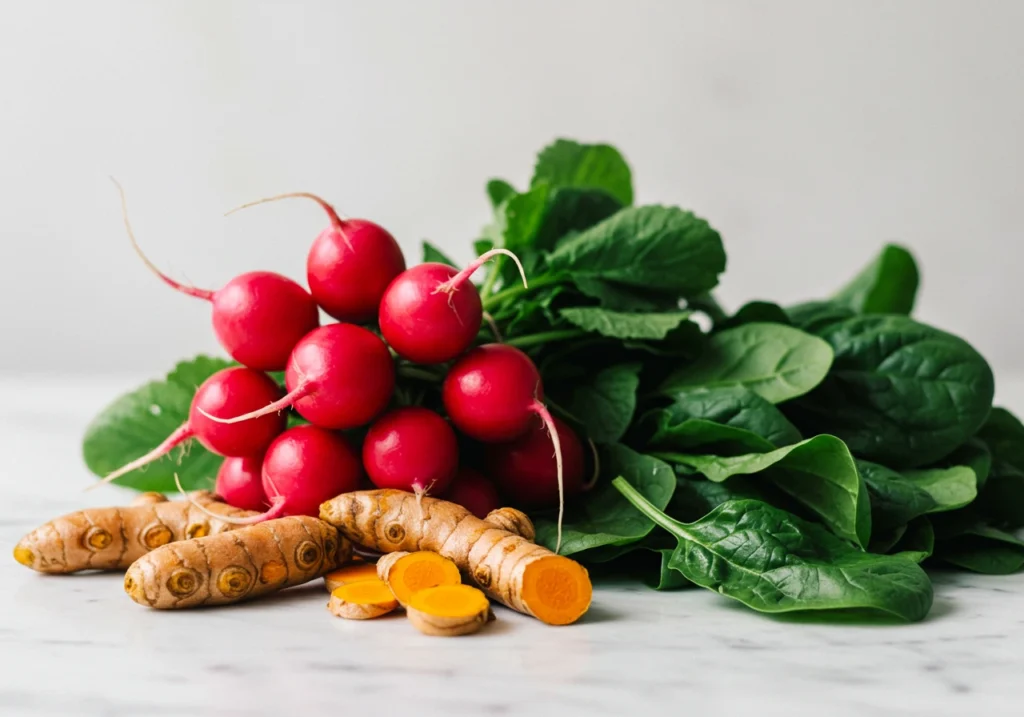
I first encountered it at a tailgate party down South, and I’ll never forget how everyone stood around the pot like it was a sacred ritual. Folks weren’t just hungry—they were honoring tradition. And in that moment, I got it.
How Pastalaya Compares to Jambalaya
Now, hold up. If you’re thinking, “Isn’t that just jambalaya with noodles?” you’re half right. Both dishes carry the Cajun DNA—the Holy Trinity (onions, celery, and bell peppers), bold spices, and savory meats—but where they differ is in texture and technique.
In jambalaya, rice simmers right in the broth, absorbing every last drop of flavor. Pastalaya, however, calls for pasta that either cooks in the same pot or is stirred in later, lending a toothier bite and a slightly different finish. Plus, with pasta being a more forgiving starch, the chances of overcooking it into mush? Pretty slim.
And flavor-wise? Oh baby, it’s still a symphony of smoky sausage, tender chicken, paprika, garlic, and thyme. But that pasta brings a whole new mouthfeel. Comfort food meets Cajun punch.
This makes it a hit not just with locals but with anyone who loves jambalaya but prefers the texture of pasta. It’s familiar, yet refreshingly new.
Cultural Significance of Pastalaya
There’s more to Pastalaya than just flavor. It’s a culinary storyteller. It tells tales of French Acadians, resilient cultures, big families, and even bigger pots of food cooked for celebrations, fundraisers, and faith-based gatherings.
In Louisiana, food isn’t just sustenance—it’s identity. And in this identity, Pastalaya plays its part loud and proud. You’ll find it at crawfish boils, church picnics, and yes, even weddings. Why? Because it feeds the masses, warms the heart, and gets better with every stir.
Pastalaya also embodies Cajun ingenuity. It’s flexible, resourceful, and full of character—just like the people who invented it. While it may not have centuries of global fame like pasta alla vodka or coq au vin, it’s earned every bit of its reputation in Southern kitchens.
And let’s not forget its role in bringing folks together. When that big pot hits the center of the table, suddenly everyone’s family.
The Evolution of Pastalaya
From the Bayou to Backyard BBQs
Now let’s rewind the clock a bit. Historically speaking, Pastalaya’s roots are tied to jambalaya, which itself evolved from paella, brought by Spanish settlers to Louisiana in the 1700s. Over time, rice-based jambalaya became a staple. But the swap to pasta? That’s where modern culinary creativity shines.
Some believe it started as a way to stretch meals when rice was in short supply. Others say it began at outdoor cook-offs where large quantities of food had to be made quickly without losing depth of flavor. Either way, it caught on fast—thanks to its satisfying blend of tradition and innovation.
Today, it’s not just a regional treat. Thanks to food blogs like Season Two Taste and viral recipe videos on TikTok, Pastalaya has reached screens—and dinner tables—across the globe.
Variations Over Time
Let’s be honest, the base of Pastalaya is just the start of your flavor journey. Over the years, cooks have spun their own versions—from the meaty madness of chicken, shrimp, and andouille sausage all in one pot, to light veggie-forward renditions for meatless Mondays.
In fact, I’ve experimented with a mushroom and smoked paprika version, and let me tell you—it was magic. Still bold. Still Cajun. But with a twist that even plant-based eaters would cheer for.
Some home chefs simmer the pasta in stock to soak up flavor. Others cook it separately to control texture. There’s even a baked version with melty cheese on top—hello, Cajun casserole!
These variations reflect what makes Pastalaya so lovable: It’s a dish with room to grow, adapt, and reflect the creativity of whoever’s behind the spoon.
Part 3: Ingredients and Substitutions
Essential Ingredients for Pastalaya Recipe
The heartbeat of every Pastalaya recipe lies in its ingredients—a flavorful ensemble that creates that soulful, spicy symphony in every bite. Whether you’re whipping up a quick weeknight meal or feeding a crowd on a lazy Sunday, getting these elements right is crucial.
Let’s start with the holy trinity of Cajun cooking: onions, bell peppers, and celery. This aromatic base, affectionately known in Southern kitchens as the trinity, delivers the depth and fragrance that define Cajun flavor. Sautéed until soft, they’re the foundation upon which the whole dish is built.
And let’s not forget the spices and seasonings. The best Pastalaya recipes call for Cajun or Creole seasoning, garlic powder, smoked paprika, thyme, black pepper, and a little cayenne for heat. Want it extra spicy? Toss in a pinch of red pepper flakes.
Now to the soul-soaker: pasta. While penne is the go-to for its ability to hold sauce in its grooves, you’ll also find rotini, rigatoni, or even elbow macaroni making the cut in various households.
When I tried it myself, I went with rotini, and wow—it soaked up the flavor like a sponge and kept a pleasant bite even after reheating. You want a pasta that stands up to the boldness without turning into mush.
Here’s a quick ingredient overview:
| Ingredient | Why It’s Important |
|---|---|
| Chicken thighs | Adds rich, tender flavor; doesn’t dry out easily |
| Smoked sausage (andouille or kielbasa) | Delivers smoky depth and spice |
| Shrimp (optional) | Brings sweet seafood balance |
| Onions, celery, bell peppers | Aromatic base of Cajun cooking (a must!) |
| Garlic & Seasonings | Enhances umami, spice, and depth |
| Penne or rotini pasta | Holds sauce well; stays firm in broth-based cooking |
| Chicken or vegetable broth | Builds body in the sauce and binds flavor to the pasta |
Substitutions and Dietary Adjustments
No meat? No problem. This dish is versatile enough to bend without breaking.
Vegetarian and Vegan Options
Skip the meats and go with plant-based sausage or smoked tofu. Add mushrooms—portobello or shiitake are fab for that meaty chew. For an extra punch, toss in roasted chickpeas or sautéed zucchini for texture.
Using vegetable broth and a vegan Cajun spice mix keeps it flavorful yet fully plant-powered. Even the most devout carnivore might not notice the difference—yep, it’s that good.
Part 4: Equipment Needed
Kitchen Tools for Preparing Pastalaya
You don’t need a fancy kitchen to whip up an unforgettable Pastalaya recipe, but having the right tools can make the process smoother, faster, and, let’s be real—way more enjoyable. After all, nobody wants to wrestle with a dull knife or deal with sauce bubbling over in a too-small pot. So here’s what you’ll want to keep within arm’s reach before you fire up that burner.
Recommended Cookware
First things first—let’s talk pots. The best Pastalaya recipes start in a heavy-bottomed pot, preferably a large Dutch oven, stockpot, or cast-iron enameled pot. These hold heat evenly, which is vital for building that rich, browned flavor base when you sauté your meats and veggies. Trust me, that golden fond stuck to the bottom of the pan? That’s Cajun gold.
If you’re making Pastalaya for a crowd (which you absolutely should sometime!), consider investing in a jumbo jambalaya pot or an outdoor propane burner setup. Down in Louisiana, outdoor cooks swear by these setups for big batch cooking. It turns the process into a full-blown event.
Tip from the bayou: Go bigger than you think you need—Pastalaya disappears fast.
Essential Utensils
- Wooden Spoon or Silicone Spatula: Ideal for stirring without scratching your pot. Wooden spoons are perfect for deglazing and scraping up flavor-packed bits.
- Sharp Chef’s Knife: A must-have for finely chopping onions, peppers, and celery quickly and safely.
- Cutting Board (preferably two): Use one for meat and the other for vegetables to avoid cross-contamination.
- Tongs: Great for flipping sausage or stirring heavier ingredients.
- Measuring Cups and Spoons: When it comes to seasoning, precision matters—especially if you’re adjusting spice levels.
And for those who love shortcuts? A mini food processor works wonders for prepping your veggies in seconds.
When I made Pastalaya the first time, I used my trusty 6-quart Dutch oven and a long wooden spoon handed down from my grandma. There’s something magical about cooking a modern dish with a tool that’s seasoned in memories. And yep—everything cooked evenly, nothing stuck, and cleanup was a breeze.
Real talk: If your pot’s too small, your flavor will suffer. Let your ingredients breathe.
Part 5: Step-by-Step Cooking Instructions
Time to roll up those sleeves and turn raw ingredients into Pastalaya magic. This isn’t just a meal—it’s an experience. From the sharp scent of sizzling sausage to the heartwarming aroma of simmered spices, every step is part of the story. Whether you’re a beginner or a seasoned cook, follow these steps and you’ll end up with a pot of bold, belly-filling deliciousness.
Preparing the Ingredients
Before any flame hits the pan, it’s prep time—arguably the most underrated part of cooking Pastalaya. But don’t skip it! Getting everything chopped, measured, and ready makes the actual cooking flow like butter in a hot skillet.
Chopping Vegetables
Start by finely dicing your onions, green bell peppers, and celery—a.k.a. the Holy Trinity of Cajun cuisine. This flavor base brings soul to the dish. You’ll want equal parts of each, sautéed until they’re soft, fragrant, and slightly browned. If you’re short on time, a food processor can speed up the chopping—but be careful not to puree them!
Prepping Proteins
Trim your chicken thighs and cut them into bite-sized chunks. Slice your smoked sausage into thin coins. If you’re using shrimp, peel and devein them ahead of time but hold off on cooking them till later—they cook fast and you don’t want rubbery seafood.
Measuring Spices and Seasonings
Grab your Cajun or Creole spice mix, garlic powder, thyme, paprika, black pepper, and a pinch of cayenne. Measure them all into a bowl now, so you’re not scrambling mid-sizzle. Trust me, it keeps your rhythm smooth and the flavor consistent.
Cooking the Proteins
This is where your kitchen starts to smell like a Louisiana street festival.
Searing the Sausage
Toss your sliced sausage into a hot pot—no oil needed yet, as sausage renders its own fat. Let it cook undisturbed for a few minutes to form that gorgeous, caramelized crust. Flip and sear the other side, then set the sausage aside. This step is critical for infusing that smoky flavor into the oil.
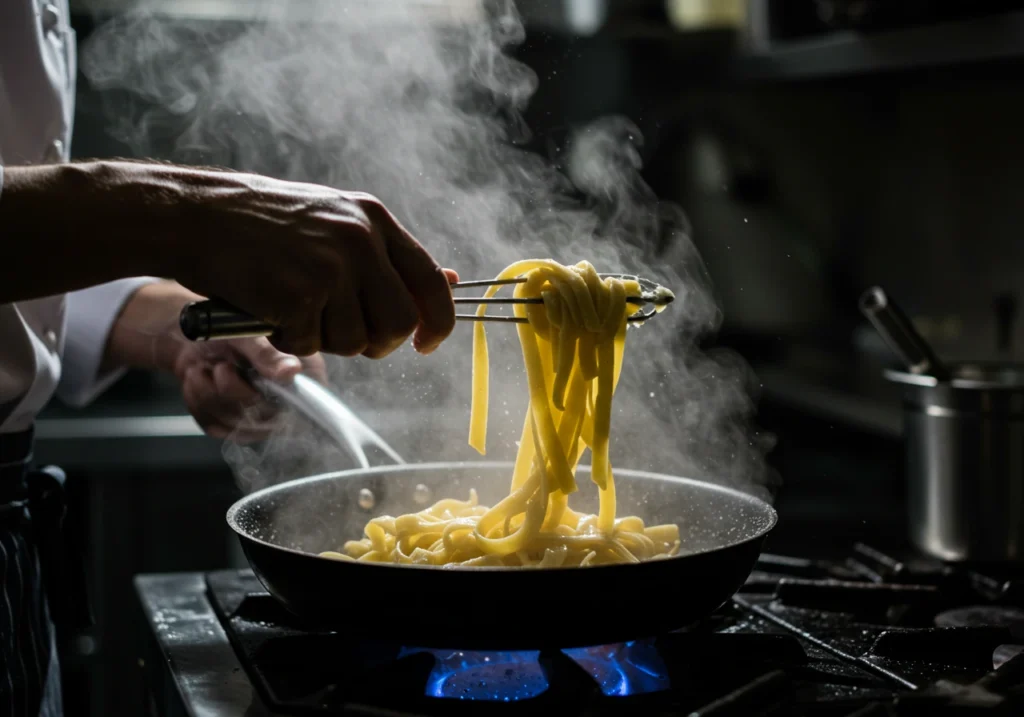
Browning the Chicken
In the same pot (don’t wipe it—those brown bits are flavor gold!), add a splash of oil if needed, then throw in your chicken. Season lightly with salt and pepper. Brown it evenly, letting it pick up all that sausage essence. Cook until the outside is golden, but don’t worry if it’s not fully done—it’ll finish cooking later.
Incorporating Seafood (if applicable)
If you’re going the shrimp route, cook them last. Toss them in just before the final simmer stage and let them poach gently in the broth. They only need about 3–5 minutes, max. Pink and curled? They’re ready.
Sautéing the Holy Trinity
Back in the pot (yep, the same one!), it’s time to layer flavor.
Techniques for Optimal Flavor
Add a drizzle of oil or butter and throw in your onions, peppers, and celery. Stir frequently, letting them soften and sweat. You’re not just cooking here—you’re unlocking aromatics.
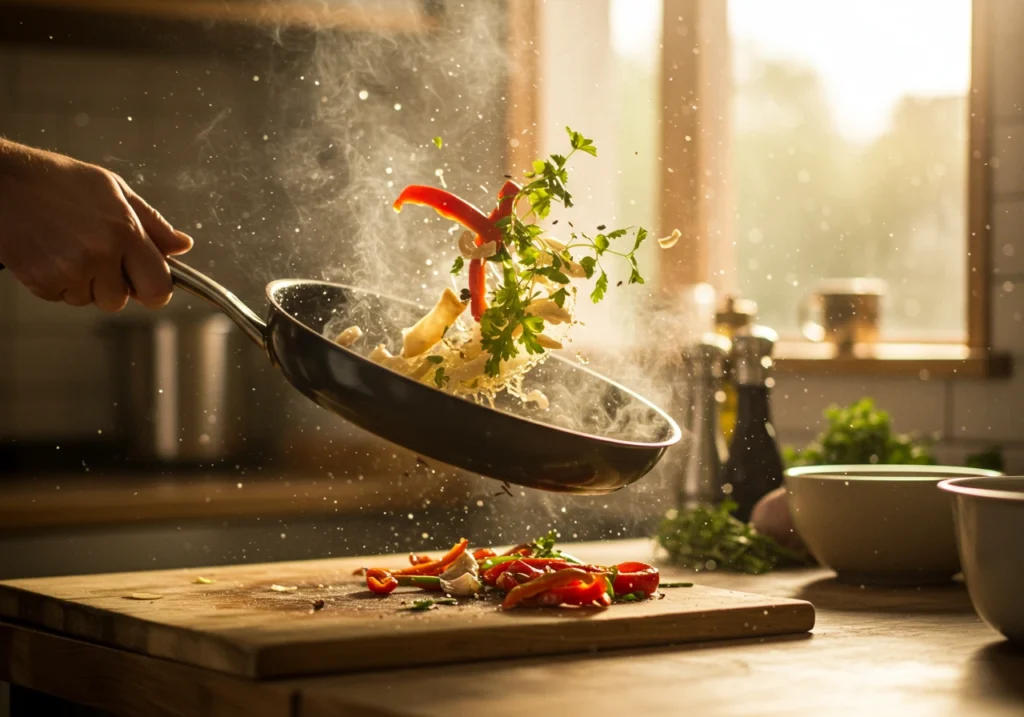
Importance of Deglazing the Pan
Once the veggies are tender, pour in a splash of broth to deglaze. Use your wooden spoon to scrape up all the flavor-packed bits stuck to the bottom. That’s where the real magic lives.
Combining Ingredients and Simmering
Now that everything is prepped and seared, it’s time to bring this beast together.
Adding Spices and Seasonings
Toss in your pre-measured spice mix and minced garlic. Stir it into the veggie base and let it bloom for a minute or two—this releases essential oils and deepens the flavor.
Incorporating Broth and Liquids
Add your chicken or seafood broth, plus a small can of diced tomatoes if you want a little extra richness. Stir in the browned chicken and sausage. Bring everything to a simmer and reduce the heat.
Simmering to Meld Flavors
Let it simmer gently for 15–20 minutes. This is when all those ingredients become best friends. Stir occasionally and adjust the heat to prevent sticking.
Cooking the Pasta
Now for the twist: pasta, not rice. And it matters how you cook it.
Choosing the Right Pasta
Penne, rotini, or rigatoni work wonders. Their grooves and spirals are perfect for catching sauce and spice.
Cooking Pasta Within the Dish vs. Separately
Some cooks add dry pasta straight into the simmering broth—it soaks up all that flavor. Others prefer to boil it separately to better control texture. If you’re new to this, cook it separately and stir it in near the end. You’ll get perfect texture every time.
Ensuring Proper Texture
If you’re cooking pasta in the broth, monitor it closely. Stir often, and be ready to add a splash more broth if things get too thick. You want tender but not mushy noodles—just right.
Final Adjustments and Serving
You’re so close. Time to polish this Cajun masterpiece.
Adjusting Seasoning
Taste your pot. Does it need more salt? A little extra heat? Maybe a dash of smoked paprika or hot sauce? Now’s the time to tweak.
Garnishing Suggestions
Top each bowl with chopped green onions, a sprinkle of parsley, or even a few dabs of hot sauce. Want creamy contrast? Add a dollop of sour cream or a sprinkle of shredded cheese (if you’re feelin’ fancy).
Serving Temperature and Presentation
Serve Pastalaya piping hot. Ladle it into deep bowls, pile it high, and don’t forget the garlic bread on the side. It’s a rustic dish, so don’t fuss with perfect plating—just make it hearty, hot, and irresistible.
Part 6: Tips and Tricks
Expert Tips for the Perfect Pastalaya
Making Pastalaya is one part love, one part seasoning, and one part not screwing it up. (Just kidding—kind of.) While this dish is flexible and forgiving, a few expert tips can help elevate your Pastalaya recipe from just “good” to downright unforgettable.
Balancing Flavors
One of the biggest secrets to an epic Pastalaya? Balance. You want heat, but not a five-alarm fire. Richness, without being greasy. Spice that sings, not slaps.
Here’s how:
- Use a well-rounded Cajun seasoning—one that includes paprika, garlic, and herbs, not just cayenne. You’re not aiming for heat alone; you’re going for complexity.
- Taste as you go. Seriously. That broth will tell you everything you need to know. Is it flat? Add salt or acid (like a splash of lemon juice). Too salty? Toss in a raw potato while simmering—it can soak up the excess.
- Add a pinch of brown sugar if the dish feels too sharp. Sounds odd, but it rounds things out like a charm.
Oh—and don’t overdo the garlic unless you’re planning on warding off vampires and friends.
Avoiding Common Mistakes
Don’t let rookie errors mess up your masterpiece. Here’s what to avoid:
- Overcooking the pasta: Whether you’re cooking it directly in the broth or separately, keep a close eye. You want that perfect al dente bite.
- Skipping the deglaze: All that flavor stuck to the pot after searing sausage? That’s gold. A splash of broth or even water brings it back to life.
- Cooking seafood too early: Shrimp and fish cook in minutes. Add them too soon and they’ll end up rubbery.
- Using dry chicken breast: Go for thighs—they’re juicier and way more forgiving.
And for the love of flavor—don’t forget to stir frequently. Pastalaya loves attention.
Time-Saving Techniques
Want that slow-simmered depth without spending hours at the stove?
Try these shortcuts:
- Chop veggies ahead of time and store them in airtight containers. The Holy Trinity lasts for days in the fridge.
- Use pre-cooked sausage to cut down browning time. Just give it a quick sear to crisp the edges.
- Don’t want to babysit your pot? Use a Dutch oven with a tight-fitting lid, and let it gently simmer without needing constant stirring.
- Make a double batch of seasoning and store it in a spice jar. Next time you cook, you’ll be halfway there.
And here’s my favorite hack: make a big batch and freeze single servings. Reheat with a splash of broth, and boom—Cajun comfort on demand.
Part 7: Pairing and Serving Suggestions
Side Dishes to Complement Pastalaya
When it comes to Pastalaya, it’s all about balancing that rich, bold dish with sides that can both complement and refresh. Sure, you could eat it on its own, but why not elevate the experience with these tried-and-true Cajun side dishes?
Traditional Cajun Sides
If you’re sticking to the classics, Cajun cornbread is a must. The slightly sweet, crumbly texture pairs perfectly with the spicy, hearty Pastalaya. Alternatively, a serving of fried okra adds a crispy, earthy crunch that contrasts beautifully with the dish’s smooth richness. You can’t go wrong with these Southern staples.
Another crowd favorite is red beans and rice, which gives a comforting, slightly creamy backdrop to the vibrant Pastalaya. It’s a true Louisiana combo you’ll find at almost any feast.
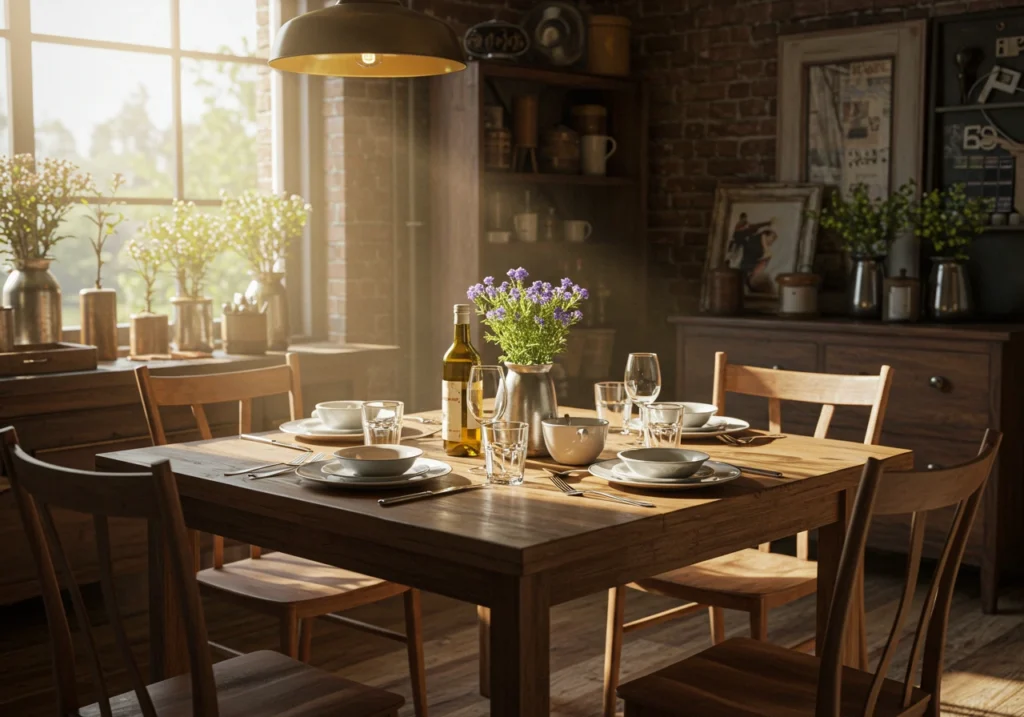
Salads and Breads
For something lighter, a simple green salad with a tangy vinaigrette can cut through the richness of the dish. Go for something zesty with lots of texture, like a Cajun-style slaw. It’s got the crunch and the bite that balances the flavors.
And then, of course, garlic bread or buttery dinner rolls—perfect for soaking up any leftover sauce at the bottom of your bowl. Trust me, you won’t want to miss a drop.
Beverage Pairings
When it comes to drinks, a cold iced tea is the Southern standby, but if you’re in the mood for something with a little more zing, try a lemonade—the acidity cuts through the spiciness beautifully. For something with a kick, Cajun beer (like Abita) or a light lager would match the dish’s boldness without overpowering it.
Part 8: Frequently Asked Questions (FAQs)
What is Pastalaya Made Of?
Pastalaya is a bold Cajun dish made with a combination of pasta, smoked sausage, chicken, shrimp (optional), and the Holy Trinity of Cajun cooking: onions, bell peppers, and celery. These ingredients are simmered together in a flavorful broth with a variety of spices, including Cajun seasoning, garlic, thyme, and paprika. The result? A spicy, hearty, and satisfying one-pot meal that combines the richness of pasta with the bold flavors of Louisiana.
What’s the Difference Between Jambalaya and Pastalaya?
The key difference between jambalaya and pastalaya is the starch used. While jambalaya is traditionally made with rice, pastalaya swaps in pasta as the base. Both dishes share the same Cajun roots and feature the same essential ingredients like sausage, chicken, and vegetables, but pasta provides a different texture and absorbs the flavors in a unique way. Essentially, pastalaya is jambalaya with a twist—replacing rice with pasta for a hearty, flavorful dish.
Is Pastalaya Healthy?
Pastalaya can be a nutritious option depending on the ingredients you choose. The dish is rich in protein from the chicken, sausage, and shrimp, and it’s full of vegetables from the Holy Trinity (onions, bell peppers, celery). However, it can also be high in sodium and fat due to the sausage and seasoning. To make it healthier, opt for lean chicken, use less sausage, and go light on the salt. You can also swap in whole wheat or gluten-free pasta for a fiber boost.
Do You Put Rotel in Pastalaya?
While Rotel (diced tomatoes with green chilies) isn’t a must for Pastalaya, many people add it for extra flavor. The mild heat from the green chilies and the tangy tomatoes complement the dish’s rich, savory profile. If you prefer a milder version, you can skip the Rotel or use plain diced tomatoes instead. It’s all about customizing the dish to your taste!

